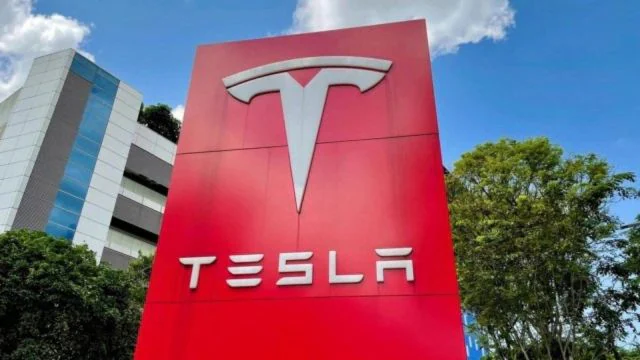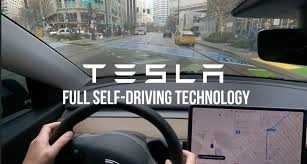Jury Delivers $240 Million Blow to Tesla in Landmark Autopilot Crash Case: A Watershed Moment for Self-Driving Tech
A Miami federal jury has severely damaged Tesla’s finances and reputation by dictating that it must pay over $240 million in damages for its involvement in the 2019 Autopilot crash. The historic decision is a watershed in the legal dispute over responsibility for self-driving technology and upends Tesla’s long-standing defense strategy. Elon Musk’s claim that drivers are entirely to blame for system failures is directly refuted by this. The decision highlights the true dangers of this technology at a time when Musk is actively promoting his idea of driverless taxis.

The Night of Tragedy and the System’s Failure
The case is based on a horrific incident that happened on a dark, rural road in Key Largo, Florida. 22-year-old couple Dillon Angulo and Naibel Benavides Leon stopped to gaze at the stars in their Chevrolet Tahoe. George McGee was driving his Tesla Model 3 car on autopilot when he became distracted and started looking for a dropped mobile phone. Ignoring stop signs, flashing lights, and a T-intersection, he slammed into the parked Tahoe at 62 mph.
The force of the impact was horrific. The Tahoe spun violently, throwing Naibel Benavides Leon 75 feet into the air and landing in the nearby woods, where his body was later found. Dillon Angulo survived, but suffered life-threatening and non-life-threatening injuries, including multiple broken bones and a severe brain injury that left him with a permanent limp – a bitter truth he faced in court years later.
McGee pleaded guilty to negligence and distraction, but the jury’s verdict was far harsher, finding serious flaws in Tesla’s Autopilot system. Importantly, they found that despite clear signs of driver negligence, the technology failed to intervene adequately and did not activate properly on a road (a small, non-highway road) for which it was not designed. McGee’s own testimony underscored a dangerous over-reliance: “I trusted the technology too much… I believed that if the car saw something ahead, it would warn and brake.” The jury concluded that trust was completely misplaced.
A Pattern of Opacity: Withholding the Truth?
In addition to the technical malfunction, the trial also brought forth shocking allegations of suppression of evidence. Lawyers for the Benavides family and Angulo alleged that Tesla either hid or “lost” crucial data and video footage recorded seconds before the crash – which was crucial evidence to understanding the actions (or inactions) of the Autopilot system in those crucial moments. Tesla claimed that this was a serious mistake, and the evidence was only found later.
However, the plaintiffs rejected this defense. By hiring a forensic data expert, they proved that Tesla had all the evidence in place from the very beginning, contradicting the company’s repeated denials. This was not an isolated incident; Tesla has faced persistent criticism from the families of other accident victims about delays and difficulties in obtaining crucial vehicle data. This pattern significantly undermined Tesla’s credibility before the jury. After the verdict, Niebel’s sister, Nima Benavides, declared, “We finally know what happened that night, that the car was really bad.” “Justice was done.” The revelation of the withheld evidence painted a picture of a company that was perhaps more concerned with controlling the narrative than exposing the truth.
Why This Case Broke Tesla’s Legal Firewall
The case is notable because it demolished Tesla’s typical legal defenses. Tesla has either dismissed dozens of similar lawsuits outright or quietly settled them to avoid the intense scrutiny and precedent-setting risk of a public trial. However, this four-year battle continued, exposing Autopilot’s limitations and Tesla’s corporate conduct to the harsh light of court scrutiny.
The jury’s allocation of blame was clear: they assigned Tesla 34% of responsibility ($43 million of a total $129 million award), acknowledged McGee’s primary negligence, but strongly rejected Tesla’s attempt to shift all the blame to others. The real blow was the $200 million punitive fine — a massive fine designed not just for restitution but to punish Tesla for its negligence toward safety and to deter similar conduct. “This opens the floodgates. It will give a lot of people the courage to come to court,” predicted Miguel Custodio, a car accident lawyer unaffiliated with the case. The decision provides a powerful blueprint for future litigation against Tesla and other automakers developing autonomous technology.
Tesla’s Defense, Appeal, and the Murky Payout
Tesla responded immediately and aggressively. Calling the verdict “wrong,” the company warned in a statement that it “only serves to harm automotive safety and jeopardize efforts by Tesla and the entire industry to develop and implement lifesaving technology.” They doubled down on their accusations against McGee, accusing the plaintiffs of fabricating a story “when the driver–from day one–accepted responsibility and blamed the car.” Tesla has vowed to appeal.
Another layer of complexity is the final payout amount. Tesla claims a pre-trial settlement caps punitive damages at three times its share of compensatory damages ($43 million x 3 = $129 million), making the total $172 million ($43 million compensatory + $129 million punitive). The plaintiffs strongly dispute this, claiming that the cap was based on total compensatory damages ($129 million), meaning the punitive award could be $200 million, resulting in a total judgment of $243 million. This dispute could become a major issue in post-trial motions and appeals.
Wedbush Securities financial analyst Dan Ives summarized the immediate impact: “This is a huge number that will shock others in the industry… This is not a good day for Tesla.” Whatever the final amount, the sheer size of the award is a major financial and reputational blow.
Marketing vs. Reality: The “Autopilot” Problem
A key theme that resonated throughout the trial, which plaintiffs’ lead attorney Brett Schreiber forcefully highlighted in closing arguments, was the dangerous gap between Tesla’s marketing and Autopilot’s actual capabilities. Schreiber argued that Tesla’s deliberate use of the term “Autopilot”—which presents the image of a system capable of fully autonomous flight—was fundamentally misleading for a system that only assists with lane changes, speed adjustments, and following traffic, requiring constant driver monitoring.
“Words matter,” Schreiber thundered. “And if someone is messing with words, they are also messing with information and facts.” He compared Tesla’s terminology to other automakers’ more cautious labels like “Driver Assist” or “Co-Pilot,” which were explicitly designed to lower driver expectations and prevent over-reliance. The jury’s verdict shows they agreed that Tesla’s branding promoted a false sense of security, which played a role in the tragedy.
The Human Toll and the Defense Counter
The trial continued to focus on the devastating human loss. The detailed account of the death of Naibel Benavides Leon and the continued suffering of Dillon Angulo provided a grim backdrop. Defense attorney Joel Smith made no bones about McGee’s responsibility, and emphasized that Tesla’s warnings clearly state that drivers should keep their eyes on the road and hands on the steering wheel. Smith argued that McGee blatantly ignored these warnings by looking for his phone and driving at high speeds. Importantly, Smith pointed out that McGee had safely passed through the same intersection 30-40 times before, and he explained the reason: “The reason is that his cellphone fell.” The defense’s strategy was clear: technology was not the trigger; the driver’s extreme distraction was the trigger.
Industry-Wide Tremors: A Precedent of Shared Liability
The auto industry watched the case with keen interest. The main conclusion — that an automaker can be held largely responsible for a crash even if the driver admitted negligence — sets a serious and potentially costly precedent. As companies pour billions of dollars into developing increasingly automated vehicles, the ruling signals that courts may assign shared responsibility when advanced driver-assistance systems (ADAS) fail to mitigate potential driver errors or are used outside their operating parameters. It raises a fundamental question: How strong must the safeguards be to exonerate the manufacturer when a driver misuses the system, and how clearly should the limitations be spelled out? The ruling poses a major legal risk in the race for self-driving cars.
What’s Next: Appeals, Accountability, and the Road Ahead
The legal battle is far from over. Tesla’s appeal will likely focus on the jury instructions, the admissibility of evidence (particularly regarding the “lost” data), the size of the punitive award, and the interpretation of the pre-trial damages cap. This process could take years.
Beyond the courtroom, the verdict delivers a powerful message on multiple fronts:
- Corporate Accountability: Tech companies cannot solely hide behind user error when their marketed “autonomous” or “assist” systems demonstrably fail to perform as reasonably expected or lack adequate safeguards against foreseeable misuse.
- Transparency Demanded: The evidence suppression allegations, whether proven as intentional or negligent, severely damage trust. Automakers will face immense pressure to be fully transparent with crash data.
- Marketing Scrutiny: Regulators and courts are likely to take a harder look at how self-driving capabilities are named and advertised. Overpromising with terms like “Autopilot” carries tangible legal and financial risks.
- Safety Reckoning: While Tesla claims the verdict hinders safety tech, it arguably does the opposite. It forces a critical re-evaluation of current ADAS limitations, the robustness of driver monitoring systems, and the geofencing of where these systems can operate. True safety requires acknowledging the system’s current shortcomings, not just blaming drivers.
The road to truly safe self-driving technology is now much bumpier, much more expensive, and requires a new level of corporate responsibility. This $240 million verdict isn’t just about one tragic night in Florida; it’s a sea change in fault determination in the age of autonomous aspirations. As predicted, the floodgates may now be opening.
Follow us for more news at Valleynewz.com

